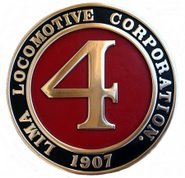It seems the commissary crew at the
Pacific Coast Railroad has been getting a lot of practice lately. I've reported on the culinary delights prepared by Patti LaRose, Mary Harlow and Karell Reader at least three times this year. These ladies cook more than I do on the El Dorado Western.

The railroad, which is located on a private Santa Margarita Ranch, found another reason to barbecue chicken and give up train rides.
Commissary crew member Patti "Cookie" LaRose tied the knot with fellow railroader Dennis Thurman, a trail crewman on the PCRR. The ceremony occurred at the nearby
Bittercreek Western Railroad, a 7-1/2-inch gauge steam railroad park in Arroyo Grande, California.
One aspect of the nuptials stand out when you read the
blog article. It's not "sight of steam engines lined up in the steaming bays and circling the miles of track" or the "delicious chicken barbecue."
Like a railroading couple I know, Patti and Dennis experienced a true railroader's wedding, down to the bride's conductor "wedding gown" and her bouquet.
Since Patti's bridal bouquet was a signal lantern and could not be tossed easily, the lantern was passed to Stephanie, Karl's sweetheart. Everyone had a wonderful time and wished the newlyweds well on their honeymoon to northern California. Congratulations and lots of love to Patti and Dennis.

It looks like the ladies will soon have a couple reasons to put some good railroading vittles. I'm certain they'll fire up the coals once the fire danger passes.
And Stephanie and Karl may just tie the knot themselves. That's reason enough to cook in my book.
No weddings are on the horizon at our Northern California railroad. But I'm sure I'll find sufficient reason to cook for the El Dorado Western soon.
Cross-posted at the 'Round the Chuckbox.
 The Dispatch is a benefit of membership in the railway foundation. A copy of the quarterly is normally mailed to each member's house each quarter.
The Dispatch is a benefit of membership in the railway foundation. A copy of the quarterly is normally mailed to each member's house each quarter.




